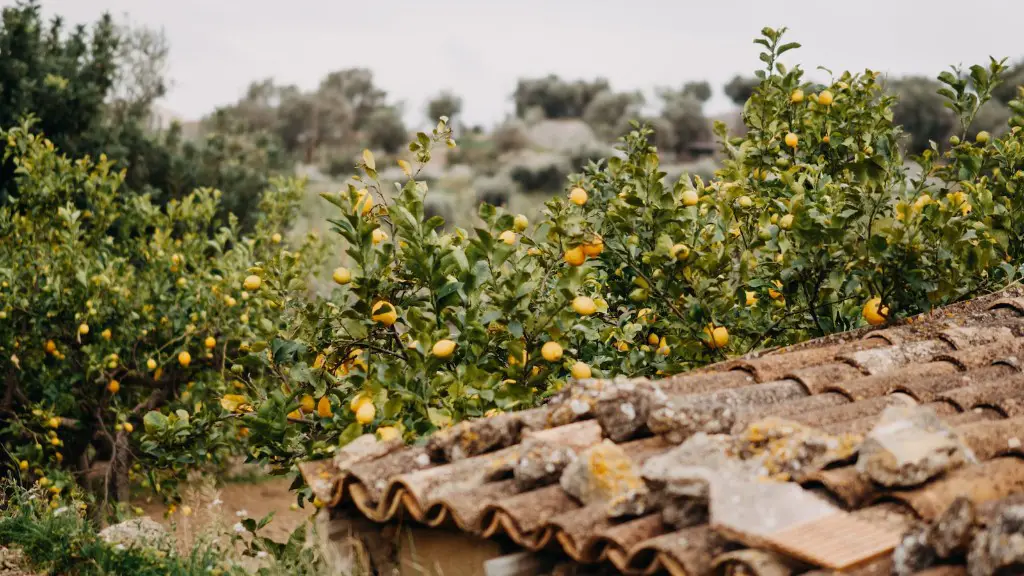Palm tree plants, with their long and elegant leaves and distinct silhouettes, adorn the home and properties of many plant enthusiasts. But like their peers, palm tree plants need a balanced diet of light, water, and food to properly grow and thrive. To help ensure that your palms are getting the nutrients they need, here are a few tips on what to feed them.
Choosing Suitable Food
The amount of food to feed your palms will depend on the species and the environmental conditions; however, most palms need light feeding year round for good health. Suitable fertilizers for palm plants include those with balances of nitrate, phosphate, and potassium, and support for that continued growth.
Though there is a general consensus that palms need light or moderate feeding at particular times to accelerate their growth, it can depend on water needs and seasonal fluctuations. Low-nitrogen and balanced fertilizer formulations are usually better for palms than high nitrogen formulations. With palm plants, it is important to add the right amount of nitrogen to ensure there is sufficient growth, yet not over-feeding.
Organic vs Chemical Fertilizer
Organic powders or granules are the preferred type of fertilizer. These contain minerals and trace elements, which are naturally found in soils and are important for healthy growth and development. Organic fertilizers have been known to have fewer drawbacks than synthetic or chemical fertilizers, such as the potential for burning foliage as a result of high concentrations.
Organic fertilizers are typically released slowly, reducing the chance of ‘burning’ the plant, and provide numerous benefits to a wide variety of plants. Organic fertilizers are often more expensive, but the costs are often repaid in quality and the longevity of your plants.
Feeding Frequency
Feeding frequency depends on the type of palm and the soil or potting medium they are planted in. As a general rule, fertilizer should be applied every two or three weeks during active growth. However, if the soil or potting mix retains moisture, then monthly fertilization may be adequate. When watering, use common sense and ensure the soil is moist right before feeding.
For young palms throughout their first year of growth, it’s best to fertilize at half-strength every two weeks. In the second year, fertilize every two to three weeks at full-strength during the active growing season (usually from April through August). During winter, you can reduce the dosages and keep the frequency to once a month.
Signs of Excess Fertilizer
If you believe your palm has not been properly fed, yellowing fronds may be a sign of nutrient deficiency but, on the other hand, yellow-brown fronds can be a sign of over-fertilization. If this is the case, cease fertilizing for a few weeks and observe for any signs of improvement in the plant.
In general, it is important to respect the natural environment of a palm tree and recognize that it requires less food and care than other plants. By ensuring that they receive the proper level of nutrition, your palms will be beautiful and healthy.
Water Before Fertilizing
It is best to water the palm tree before fertilizing, since inadequate water will prevent the fertilizer from properly entering the root system, leading to poor growth and potential harm to the plant. For example, not only will the plant not be able to absorb the fertilizer, but there is a greater risk of ‘burning’ the plant, which can lead to leaf drop and other signs of a wilted palm.
Consistency is key when fertilizing. When fertilizing, applying the same amount of fertilizer each time is important, rather than increasing the dosage from one feeding to the next. Tips and tricks such as evenly spreading the fertilizer around the base of the tree is often recommended, as this allows the fertilizer to be properly absorbed.
Research into Fertiliser
Fertilizers are not a one-size-fits-all solution for your palm tree’s dietary needs. Therefore, it is important to research the nutritional requirements of your palm tree before choosing a certain fertilizer. Different species of palms have different nutritional needs, so it’s wise to make sure you’re using the right nutrient formulation for your specific palm species.
In addition, it may be necessary to consult a gardening expert to help determine the exact fertilizer requirements for your unique palm. After all, knowing the exact nutrient needs of your palm is the key to success.
Protection with Coating
It is also important to recognize the significance of coating fertilizer. Many fertilizers come with a protective coating that is designed to slowly release the fertilizers over a period of time. This is especially helpful with young palms, since the protective coating prevents spikes of nitrogen, which would reduce the growth effect.
Once the plant is established, most gardeners find that with balanced chemical fertilizer, the nutrient levels in the soil remain relatively constant, providing a constant supply of nutrients as the palm needs them. Therefore, relying on a chemical fertilizer with a slow-release coating will help maintain the optimum nutrient balance.
Leaching and Soil Type
It is important to consider the soil type when fertilizing your palm tree. If the soil is very sandy, for example, it will leach away the plant’s nutrients more quickly and require more frequent feeding. If it is a very clay-based soil, water will more likely run off the palm rather than penetrating the roots. Therefore, make sure that when fertilizing, you are also providing adequate water to allow the fertilizer to penetrate the roots.
Correct Fertilizer Mixture
Once you’ve established the soil type and the right amount of fertilizer to feed your palm, it is important to mix the fertilizer correctly. Most fertilizers come with instructions on how to properly mix them with water. As a general rule, it is always best to err on the side of caution when mixing as too much fertilizer can harm or even kill your palm.
Once you’ve established the best fertilizer mixture for your palm trees and you’ve found the right balance of water, light, and fertilizer for growth, your palms will be more likely to thrive for many years to come.
Measuring Nutrient Levels
It is also important to measure the soil’s nutrient levels regularly. Soil tests are available online or from garden centers and can offer a detailed analysis of the soil and what it needs. This is an especially important step in the fertilizing process, as it can help you determine whether you are feeding the Palms enough or too much.
Follow Fertilizer Guidelines
It’s important to follow the fertilizer manufacturer’s guidelines when feeding your palms. The labels usually indicate how much fertilizer you need depending on the size of your palm tree and how frequently you should apply it. Be sure to read all the instructions carefully so you don’t over or under feed your palm.
Additionally, be sure to select the right fertilizer for your particular species of palm. For example, some fertilizers are formulated solely for palm trees and are higher in nitrogen and/or magnesium, making them well suited for growing palms.
Keep an Eye on your Palms
Good palm tree care starts with good observation. Mindful observation of your palms gives you clues about the health of the plant. It’s important to remember to note changes such as new growth, yellowing of leaves, and discoloration of the fronds. All of these are signs that your palm needs to be fed.
In conclusion, when it comes to feeding your palm tree, selecting the proper fertilizer and ensuring the correct amount is applied is key. Specific nutrient requirements vary from species to species, and respect your palms natural environment. With the right combination of water, light, and fertilizer, your palms will be sure to thrive.





